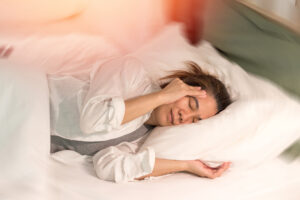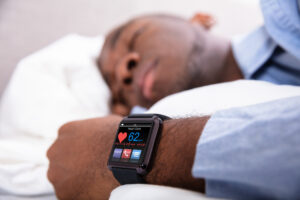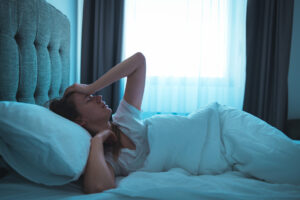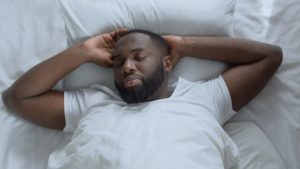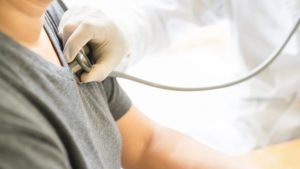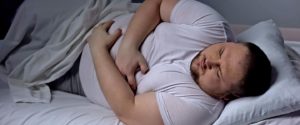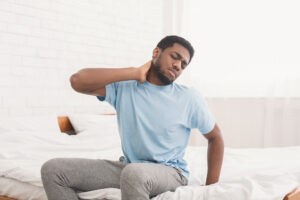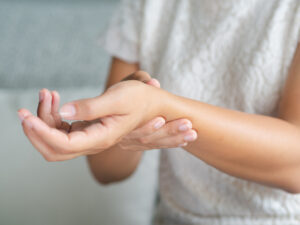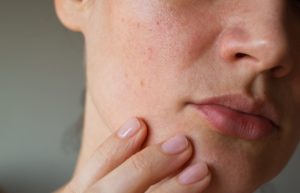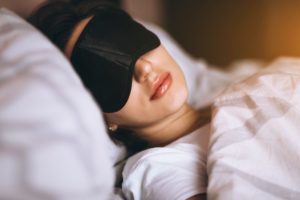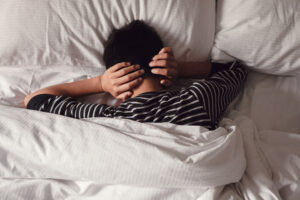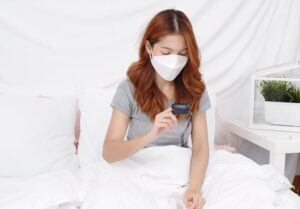When you buy through our links, we may earn a commission. Products or services may be offered by an affiliated entity. Learn more.
Why You Shouldn’t Sleep With Contacts In
If you are like one-third of contact wearers, you have probably fallen asleep with your contacts in once or twice. You may have only woken up with your eyes feeling a little dry. However, sleeping with your contacts in makes the risk of an eye infection six to eight times higher. Learn why sleeping with contacts in increases your risk of infection, what types of infections can occur, and what to do if you accidentally fall asleep with contacts in.
Is It Safe to Sleep With Contact Lenses In?
It is not safe to sleep while wearing contact lenses. According to experts, sleeping with contacts increases your risk for a corneal infection, which is an infection of the clear layer protecting the colored part of your eye.
The risk of microbial keratitis, a form of corneal inflammation caused by infection, is over five times higher when you wear your contact lenses overnight. This risk occurs regardless of your lens type — soft, hard, decorative, or prescription. Unfortunately, sleeping with contacts in is a common behavior, among teenage and adult contact lens wearers alike.
Sleeping in your lenses occasionally, or by accident, can also increase your risk of infection. Researchers even recommend against sleeping in lenses that are approved for overnight or extended wear.
What Happens If You Sleep With Contacts In?
When you sleep with contacts in, your risk of an eye infection increases significantly. In serious cases, these infections can cause permanent corneal damage and vision loss.
Bacterial Keratitis
Bacterial keratitis , or a cornea inflamed due to bacterial infection, can cause a person to lose part or all of their vision if not properly treated. Contact lens wear increases your risk of this type of infection , especially if you wear contacts overnight. Bacterial infections can be caused by more than one bacteria type, such as Pseudomonas aeruginosa and Staphylococcus aureus, which can be found in soil, water, and your body.
Bacterial keratitis can occur when bacteria is introduced to your lenses via your fingers when you put your contacts in or take them off. The bacteria can also transfer from the lenses or storage case if they have not been properly cleaned and disinfected. Rinsing your lenses in water instead of contact solution can also increase your risk of bacterial keratitis.
Acanthamoeba Keratitis
Ancanthamoeba keratitis , or inflammation of the cornea due to an infection caused by amoeba, can also lead to vision loss or blindness. This type of infection is caused by a tiny, single-celled organism called Acanthamoeba, which can be found in natural bodies of water, soil, tap water, heating and air conditioning systems, and hot tubs.
Wearing contact lenses puts people at risk for Ancanthamoeba keratitis, with 85% of the people who experience this inflammation being contact lens wearers. Poor contact lens hygiene, including swimming or showering while wearing your contact lenses, increases your risk. This type of infection can develop if you have a scrape in your eye, which may happen from either an injury or regular contact lens wear, and the organism enters the scrape via water or contact lens solution.
Sleeping in your lenses overnight can make you more susceptible to an Ancanthamoeba keratitis infection . Wearing contacts reduces the amount of oxygen to your cornea, which impairs your cornea’s ability to protect itself from microorganisms.
Fungal Keratitis
Fungal keratitis , or corneal inflammation caused by a fungal infection, can also lead to vision loss or blindness when left untreated. Types of fungi often behind fungal keratitis include those from the Fusarium, Aspergillus, and Candida species. This type of infection is more common in tropical areas of the world, but can happen in any climate. Generally, fungal keratitis is treated with antifungal medicine, but more severe instances may require surgery or a corneal transplant. Contact lens wear is a risk factor, as is experiencing an eye injury that involves a plant, like a stick or thorn.
Why Does Sleeping With Contacts Increase Your Risk of an Eye Infection?
Your eyes encounter all kinds of bacteria and microorganisms daily, but manage to stave off infection due to protection provided by your tears. Throughout the day, as you blink, you regularly introduce new tear fluid and fresh oxygen into your eyes, keeping your cornea healthy.
When you wear contacts, however, they fit snugly over your cornea and block off much of that tear fluid. This makes it harder for your cornea to defend itself against microbes or remove them from beneath your contact lens. When you sleep with contacts in, your corneas receive even less tear fluid, since you are not blinking. As a result, there is less of an opportunity for tears to get underneath and mix with the fluid beneath your lenses.
Sleeping with your contacts in or wearing contacts for an extended period of time significantly reduces the amount of oxygen that reaches your cornea. Doing so can also damage your cornea’s surface and impact its ability to regenerate fresh cells, thereby increasing your risk of infection. Wearing your contacts overnight gives bacteria more time to develop into an infection.
Soft contact lenses, which are worn by around nine in ten contact lens wearers , are designed to be more flexible and allow more oxygen to reach the cornea. But, there is still a fivefold risk of infection if you wear contact lenses while you sleep, regardless of lens type.
What If I Accidentally Sleep With Contacts In?
Even if you do not want to sleep with contacts in, you might find yourself accidentally falling asleep before taking them out on occasion. Once you wake up, it is important to remove your contacts as soon as possible. First, check that you can easily remove them. If they feel stuck, do not pull at them. Instead, use eye drops and blink until they are easy to remove.
Then, give your eyes a break. Avoid wearing contacts for at least a day and pay close attention to how your eyes feel. If you notice any symptoms indicating infection , stop wearing your contact lenses and call your eye doctor immediately. Put your contact lenses in their case and bring them to your appointment.
Signs You May Have an Eye Infection
Signs you may have an eye infection include:
- Blurry vision
- Eye discharge
- Eye redness
- Eye pain or discomfort
- Excessive tearing up
- Sensitivity to light
- Swelling
- Itchy or burning eyes
Is It Safe to Nap While Wearing Contacts?
It is not safe to sleep while wearing contacts, even if you are just taking a nap. The occasional or accidental nap in your contacts can increase your risk of an infection. If you think there is a chance you could fall asleep, it is safest to remove your contact lenses first.
How to Wear Your Contacts Safely
Sleeping is good for your health, but sleeping with your contacts in poses a risk of infection. Protect your eyes by only wearing your contacts when you are awake. Additionally, practice proper contact lens hygiene. Following these instructions can help protect against eye infections:
- Clean and disinfect your lenses according to the instructions that came with them.
- Always discard leftover contact lens solution after using. Do not top off the existing solution in your contact lens case with new solution.
- Do not expose your lenses to water of any kind, or your saliva.
- Do not wear your lenses when swimming or going into a pool, hot tub, lake, or ocean.
- Replace your storage case every three months or per your eye doctor’s directions.
- When traveling, do not transfer your contact lens solution into another container, as it is unsterile. Purchase travel-sized solutions instead.
It is also important to visit your eye doctor every year. Always get a prescription for your contact lenses, even if they are decorative and do not alter your vision. Contact lenses sold without a prescription are violating the law and may be contaminated. A doctor’s visit gives you the opportunity to talk with your doctor about the safest way to wear and maintain your contacts.

Still have questions? Ask our community!
Join our Sleep Care Community — a trusted hub of sleep health professionals, product specialists, and people just like you. Whether you need expert sleep advice for your insomnia or you’re searching for the perfect mattress, we’ve got you covered. Get personalized guidance from the experts who know sleep best.
References
9 Sources
-
Dart, J. K., Radford, C. F., Minassian, D., Verma, S., & Stapleton, F. (2008). Risk factors for microbial keratitis with contemporary contact lenses: A case-control study. Ophthalmology, 115(10), 1647–1654.
https://pubmed.ncbi.nlm.nih.gov/18597850/ -
Centers for Disease Control and Prevention. (2024, April 9). Basics of bacterial keratitis.
https://www.cdc.gov/contact-lenses/causes/what-causes-contact-lens-related-bacterial-keratitis.html?CDC_AAref_Val=https://www.cdc.gov/contactlenses/bacterial-keratitis.html -
Fleiszig, S. M., & Evans, D. J. (2010). Pathogenesis of contact lens-associated microbial keratitis. Optometry and Vision Science, 87(4), 225–232
https://pubmed.ncbi.nlm.nih.gov/20190671/ -
Centers for Disease Control and Prevention. (2024, April 15). Basics of Parasitic/Amebic Keratitis. CDC.gov.
https://www.cdc.gov/contact-lenses/causes/ -
Ibrahim, Y. W., Boase, D. L., & Cree, I. A. (2009). How could contact lens wearers be at risk of Acanthamoeba infection? A review. Journal of Optometry, 2(2), 60–66.
https://www.ncbi.nlm.nih.gov/pmc/articles/PMC3972779/ -
Centers for Disease Control and Prevention. (2024, April 10). Basics of Fungal Keratitis.
https://www.cdc.gov/contact-lenses/causes/what-causes-contact-lens-related-fungal-keratitis.html?CDC_AAref_Val=https://www.cdc.gov/contactlenses/fungal-keratitis.html -
National Research Council (US) Working Group on Contact Lens Use Under Adverse Conditions. (1990) Contact Lens Use Under Adverse Conditions: Applications in Military Aviation. National Academies Press.
https://www.ncbi.nlm.nih.gov/books/NBK234044/ -
Cope, J. R., Collier, S. A., Nethercut, H., Jones, J. M., Yates, K., & Yoder, J. S. (2017). Risk behaviors for contact lens-related eye infections among adults and adolescents – United States, 2016. MMWR. Morbidity and Mortality Weekly Report, 66(32), 841–845.
https://pubmed.ncbi.nlm.nih.gov/28817556/ -
U.S. Food and Drug Administration. (2018, September 4). Contact lens risks.
https://www.fda.gov/medical-devices/contact-lenses/contact-lens-risks




